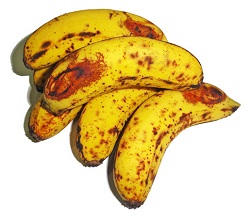
How to Count Calorie? Kcal vs Calories
Kcal vs Calories Confusion - Converting Kcal to Calories
In my attempt to count calorie in food, I was totally confused by the units - calories and kilocalories. How do you convert kcal to calories?
I came across food labels that told me that a small 30g serving of cereal gave me 300kcal, and this kept me wondering if this was the same as 300cal since we all knew that an average adult required about 2000 calories of intake. And if "kilo" equates to the amount of "1000" units and 300kcal actually meant 300 000 calories, then 30g of cereal would be sufficient to sustain many days of activities! How logical is that? Surely, there is more than it meets the eye...
Converting kcal to cal
A quick research helped to demystify kcal vs calories. I learned this:
Scientifically, 1,000 calories = 1 kcal = 1 kilocalorie = 1 Calorie = the energy it takes to raise the temperature of 1kg of water by 1°C.
Calories are units of energy so small that a tiny cookie can provide thousands of them. To ease calculations, energy is expressed in 1000-calorie units known as kilocalories. That is,
1 Calorie is equivalent to 1 kilocalorie; the capital C in Calories denotes kcal (RapidTables).
An adult need an average of 2,000 Calories, which is equivalent to 2,000 kcal or 2,000,000 calories.
However, in dietary nutrition context, while values are given for the number in kilocalories in a food, they are usually simply referred to as calories. As a result, this creates much confusion over the difference between "kcalorie" and "calories".

On food labels, calories and kilocalories are used interchangeably to mean the same thing. In other words, it is just as normal and acceptable for people to use the small "c" instead of big "C" and say "1 gram of fat gives us 9 calories" in the nutrition world as "1 gram of fat gives us 9 kilocalories or 9000 calories" in the physical science world. (In some instances, you might have also seen food packaging displaying kJ values, which is kilojoule. 1 kilojoule = 0.24 kilocalories.)
So, we have:
1 small kilocalorie (kcal) is equal to 1 large calorie (Cal):
1 kcal = 1 Cal
1 small kilocalorie (kcal) is equal to 1000 small calories (cal):
1 kcal = 1000 cal
How many calories in a teaspoon of honey
One teaspoon can scoop about 5g of honey. Based on the nutrition labels on honey, 1 teaspoon of honey (5g) provides 80kj of energy. This is translated to 19.2 kcal (80kj x 0.24 kcal).
Counting Calorie to Lose Weight
One serving of meat (225 kcal), one serving of rice/pasta (185 kcal), two servings of vegetables/fruits (100 kcal). So 1 meal of lunch or dinner average 500 kcal. We all know that to lose weight, we can count calorie and make sure that the amount of calories we consume should be less than the amount of calories we burn. Find how this works in "Using a Calorie Counter to Lose Weight".How to Burn More Calories
Common exercises like swimming, soccer, basketball, football, cycling for 1 hour burned about 400 kcal, running for 1 hour 600 kcal and walking for 1 hour burned about 200 kcal. Or you can try the Hibernation Diet - Sleep and Lose Weight formula.Read "10 Stupidest Ways to Make Your Metabolism Sluggish" and get your body to burn more calories.
Honey Seems Full of Calories?
Some people think that the honey is like caramel, and associates it to a load of calories. How much calorie is there in honey? Read: "Amount of Calorie in Honey".
End of "How to Count Calorie? Kcal vs Calories" Back to "Using a Calorie Counter to Lose Weight".